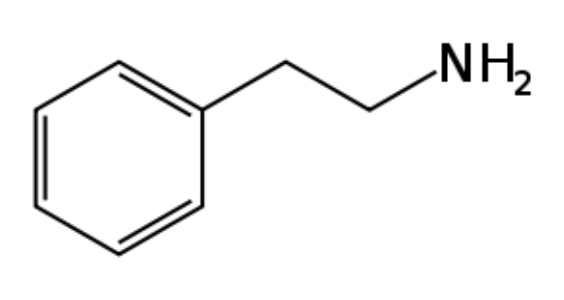
Another very common group of entheogens is the phenethylamine family. Chemically, they are made up of a hexagonal phenyl ring, an ethyl (-CH2-CH2-) side chain, and an amino (NH2) group.
Phenethylamines can be psychoactive drugs, including stimulants, psychedelics, opioids, and entactogens, which exert their effects primarily through modulation of the monoamine neurotransmitter systems. Others, such as dopamine and epinephrine, are neurotransmitters.
The primary entheogens of this category are mescaline, found in various cacti species such as Peyote or San Pedro, and MDMA (the primary constituent of ec- stasy), as well as the synthetic 2C-family of compounds created by Dr. Alexander Shulgin. Mescaline has a traditional history of use within Native American tribes, who used it in ceremonies for spiritual purposes. Suggested medical usage includes treating alcoholism and depression.
MDMA, which induces euphoria and intimacy, is currently being investigated in clinical trials by MAPS to help cure PTSD in combat veterans and anxiety related to terminal cancer. It has also been suggested that MDAM can facilitate psychotherapy by reducing the fear of self-examination, and was used by several psychologists in this manner before it was criminalized.
Signs:
Symptoms:
| Low Dose | Medium Dose | High Dose |
| dilated pupils | very dilated pupils, sweat- ing, slight hyperthermia, in- creased heart rate | coordination and articulation problems |
| Low Dose | Medium Dose | High Dose |
| altered thought processes, altered sense of color, mild euphoria, sensibilization | closed eye visuals, altered sense of time and self- awareness, fractals, eupho- ria, sympathetic arousal, al- tered sense of compassion, fear and connectedness to others | open-eye visuals, complex fractals, overflowing love |
Mescaline is also known to bind to 5HT2A and 5HT2C receptors and to interact with dopamine receptors. MDMA acts as a serotonin releasing agent, which in turn activates the 5HT receptors. MDMA is also believed to cause the release of the hormone oxytocin - a hormone usually released in actions such as hugging, orgasms, and child birth, and is thought to facilitate bonding and the establishment of trust.

